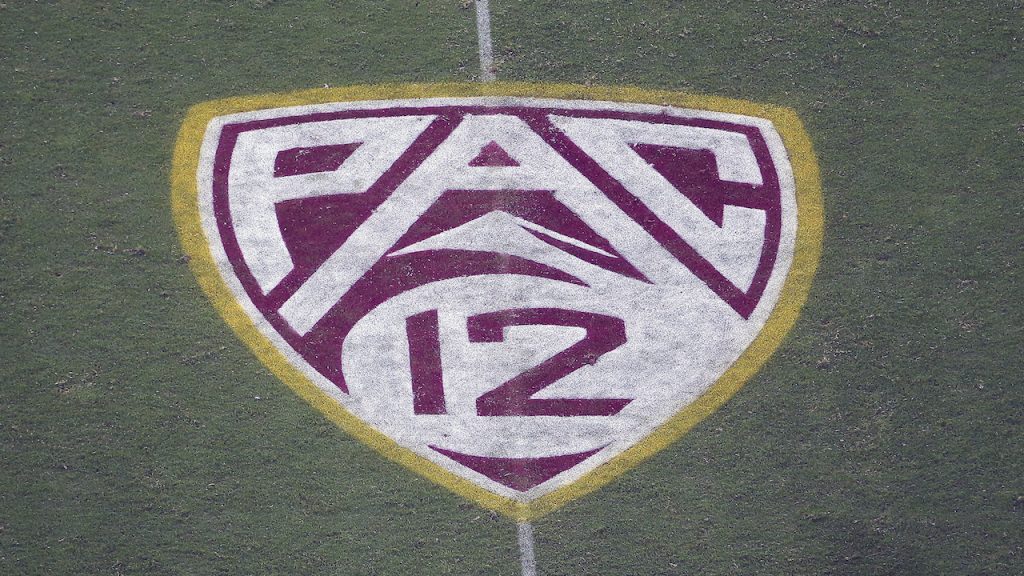Some questions have been edited for clarity and brevity.
Could Pac-12 commissioner George Kliavkoff have done anything to prevent the L.A. schools from leaving, or was the revenue gap from the Larry Scott era too much to overcome? — @KwadeSays
The degree to which Kliavkoff is responsible for the conference on the brink of destruction is a topic I have pondered often in the past 48 hours and discussed at length with the Hotline’s A-list sources.
Could he have done more during his year in office to ensure USC (primarily) and UCLA (secondarily) were fully committed? Did he take their allegiance for granted?
To some extent, the answer to all three questions is yes.
It has to be yes because it unfolded on his watch and he was caught off guard.
That alone suggests there wasn’t maximum engagement with the L.A. schools on the crucial issue on conference revenue.
And I would bet heavily that Kliavkoff is second-guessing himself for not having done more, even though everything he did over the past year seemed logical at the time based on the facts at hand.
Or as one conference source said: “I like George and think he’s done a nice job for us. But he’s swimming with sharks.”
One of those sharks is the man who looked him “in the eye” and agreed to an alliance: Big Ten commissioner Kevin Warren.
That said, there was nothing Kliavkoff could have done given the hand he was dealt.
Once Fox ran the revenue numbers and whispered in Warren’s ear and the Big Ten opened its door, the Trojans and Bruins were headed to the greenest pasture imaginable.
In the Pac-12, they could have reasonably expected $40-something million per year in media rights starting in 2024.
In the Big Ten, that figure will double, at minimum.
And as we explained on Friday, strategic mistakes made years ago by Kliavkoff’s predecessor set the stage for the schools to leave.
Had Larry Scott gotten the Pac-12 Networks on DirecTV to boost revenue … had he agreed to a shorter Tier 1 deal to allow the Pac-12 to renegotiate its media rights before the Big Ten … had he accepted a lifeboat from ESPN three years ago … none of this would have happened.
So, yes: Kliavkoff has to own this because he’s in charge.
But even with hindsight, we’re at a loss to pinpoint a specific step he could have taken to prevent it.
Curious for your take on what this means for Cal and Stanford and how other conferences value/think about the Bay Area media market. — @nwpapas
Do you think Cal and Stanford might use this opportunity to exit football? — @BearFlagFan
In all candor, I believe this could mark the beginning of the end of major college football for the Bay Area schools.
Their relatively low value within the college football marketplace is one reason for that bleak outlook.
Yes, the Bay Area is a huge media market, and that mattered a decade ago when it was all about how many cable homes were in your footprint.
Now, the main driver is brand value: Fox and ESPN will pay for the football programs that generate ratings and are most likely to land in prime TV windows. Neither Bay Area team clears those bars.
(From the standpoint of potential membership in the Big Ten, why would Northwestern ever want the conference to toss Stanford a lifeline? They are direct competitors on the recruiting trail.)
The other reason for our skepticism is the economic landscape.
At some point in the near future, college athletes likely will be declared employees, or pseudo-employees, and receive compensation from the schools for their services.
There’s no chance Stanford would ever do that, and we doubt Cal would take the plunge. On both campuses, the faculty would revolt like it’s Paris in 1789.
Add the unseemly aspect of name, image and likeness — when it’s used as a proxy for pay-for-play — and the entire sport is careening in a direction that conflicts with the institutional philosophies on both sides of the Bay.
Did the UC Regents push back at all on UCLA splitting from Cal? Or are they totally separate entities on this? — @WorkishFromHome
UCLA’s ability to separate from Cal is one of the most baffling aspects of the development.
Why would the University of California’s Board of Regents allow the Westwood campus to take a step that so damages the Berkeley campus?
UCLA received the necessary bureaucratic approvals, but at this point, that’s the extent of our knowledge of the process.
There is one other factor to consider, however.
Michael Drake is the president of the University of California. Previously, he was the president of Ohio State.
UCLA athletic director Martin Jarmond spent almost a decade working in the Ohio State athletic department.
They know each other well.
And for that matter, it’s worth noting that USC athletic director Mike Bohn grew up in Big Ten country, in Illinois, while USC president Carol Folt is from … Akron.
Did all those Midwestern roots play a role in the schools’ willingness to leave their West Coast brethren behind?
I can’t answer that. But it’s one of many issues we’ve pondered.
How united are the 10 remaining schools? Are Washington and Oregon most likely to take the first good invite? — @LAWomensHoops
The Pac-12 issued a statement on Thursday in which it declared an “unwavering … commitment” to continuing as the Conference of Champions and looked forward “to partnering with current and potential members.”
Ignore it.
The schools are completely united until they aren’t.
The unfortunate reality is that each university has entered survival mode, with no allegiance except to itself.
The only thing bonding them together is the absence of escape hatches.
With the Big Ten’s door closed, at least for the time being, the Huskies and Ducks are stuck.
We expect the Arizona schools and perhaps Colorado and Utah to explore a move into the Big 12.
But again, interest means little without an invitation.
What schools are most likely to be targeted for expansion by the Pac-12? How big do they go? — @thankyoucallen
With its survival at stake, the conference must expand the scope of potential membership.
Geography no longer matters.
Academic reputation no longer matters.
Religious affiliation no longer matters (in theory).
The Pac-12 should consider anyone and everyone, from Boise State to San Diego State to SMU.
But absent a raid of — or merger with — the Big 12, there aren’t any schools that would qualify as accretive (financially) for the remaining 10 members.
Are the Arizona schools joining the SEC? — @P12PRE
We can answer that question in short order — no — but it raises a broader question:
How much value do Arizona and Arizona State carry on the open market? Specifically, how attractive are they to the Big 12?
The schools certainly fit geographically, and Arizona’s basketball program would be ideal for the Big 12.
But valuation is based on the strength of your football brand, and the Wildcats are a tick above zero on that scale.
The Sun Devils would need to pack enough media value to account for Arizona, as well, if we presume they’re a package deal. (I’m not sure that’s the case, but it’s a subject for another column.)
ASU’s situation is comparable to the dilemma facing Cal and Stanford: The size of your media market matters far less than it did a decade ago.
Value is based on the ability of your football program to drive ratings and claim prime broadcast windows.
In that regard, the Sun Devils are one of many programs on the second tier.
Could the Big 12 decide to expand because it believes bigger is better, even without a corresponding increase in revenue?
That’s one of many unknowns.
How can Washington president Ana Mari Cauce lead the Pac-12 executive committee and lead Washington out of the conference at the same time? — @EnzoRossi85
Cauce took charge of the executive committee, which drives the agenda for the Pac-12 board, on July 1.
At the same time, UW is undoubtedly searching for an escape hatch.
Is she claiming allegiance while looking to leave? How much credibility does she have with fellow presidents and chancellors?
Probably no more or less than anyone else.
In each case, they’re committed until they aren’t.
The situation is deeply unfortunate.
Do the Pac-12 legacy media have any discernible value, or is Fred Sanford now the only viable buyer for the networks? — @EngelKRichard
At this point, it’s impossible to determine the media value of any Pac-12 inventory because we don’t know if there will be a Pac-12 when the next contract cycle begins in the summer of 2024.
RELATED ARTICLES
Stock report: Pac-12 survival clashes with Big 12 expansion scenarios
What’s next for the devastated Pac-12: Survival scenarios in a world without USC and UCLA
USC and UCLA leaving for the Big Ten in 2024, delivering a huge blow to the Pac-12
Pac-12 stock report: USC and Oregon “playing a different game” in the NIL era; Washington’s momentum; another QB departs
NIL’s 1st anniversary: Pac-12 schools “not out in front” in new era
(That coincides with the departure of USC and UCLA, by the way.)
What we do know is that Kliavkoff’s next moves on conference membership cannot happen without input from potential media partners — he must know what the networks would offer based on the structure of the league.
And any discussions with ESPN, Fox, CBS, etc., will assuredly involve merger or partnership options with the Big 12 and, perhaps, the ACC.
Prior to Thursday, the Pac-12’s media rights negotiations were set to begin later this year in an orderly fashion.
Now, survival, mergers, acquisitions and media negotiations are all in the same cauldron.
What’s the most likely scenario, in your view, for Washington State? Do president Kirk Schulz’s personal connections make any difference? — @TWamsgans
Schulz spent seven years as the president of Kansas State (2009-16) and could attempt to use his relationships in the Big 12 to broker a deal in which the Pac-12 survives in some form or fashion.
Will that be enough? We cannot say.
But were the Hotline to offer a Fear Factor list — the Pac-12 schools with the most to lose in the next 18-24 months — the Cougars would be at the top, followed closely by Oregon State, Stanford, Cal and Colorado.
Support the Hotline: Receive three months of unlimited access for just 99 cents. Yep, that’s 99 cents for 90 days, with the option to cancel anytime. Details are here, and thanks for your support.
*** Send suggestions, comments and tips (confidentiality guaranteed) to pac12hotline@bayareanewsgroup.com or call 408-920-5716
*** Follow me on Twitter: @WilnerHotline
*** Pac-12 Hotline is not endorsed or sponsored by the Pac-12 Conference, and the views expressed herein do not necessarily reflect the views of the Conference.
Related posts:
 Pac-12 football: The Hotline’s post-spring practice predictions for the 2022 division races
Pac-12 football: The Hotline’s post-spring practice predictions for the 2022 division races
 Wilner Hotline – From the red meat to the cupcakes and everything in between, we rank the 2022 Pac-12 schedules
Wilner Hotline – From the red meat to the cupcakes and everything in between, we rank the 2022 Pac-12 schedules
 Wilner Mailbag -DEFCON 1 realignment scenario, should Oregon, Washington, UCLA and USC leave the conference?
Wilner Mailbag -DEFCON 1 realignment scenario, should Oregon, Washington, UCLA and USC leave the conference?

(AP Photo/Rick Scuteri)
Pac-12 picks of the week: Four huge underdogs, three Power Five duelsJon Wilner
Jon Wilner has been covering college sports for decades and is an AP top-25 football and basketball voter as well as a Heisman Trophy voter. He was named Beat Writer of the Year in 2013 by the Football Writers Association of America for his coverage of the Pac-12, won first place for feature writing in 2016 in the Associated Press Sports Editors writing contest and is a five-time APSE honoree.

